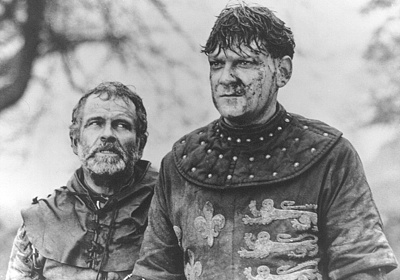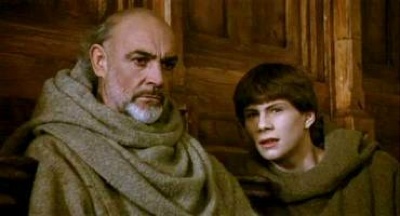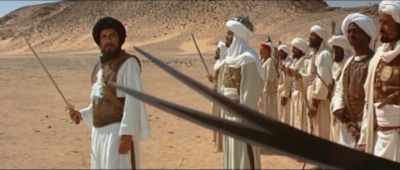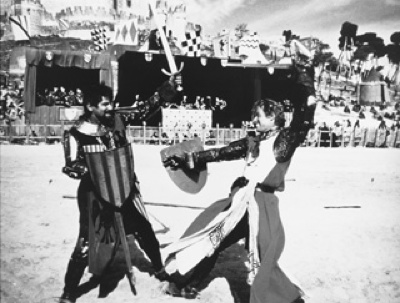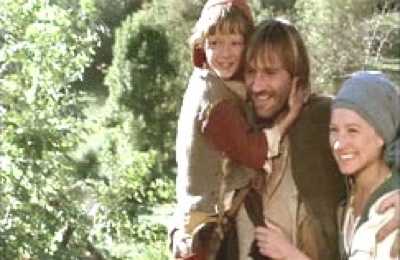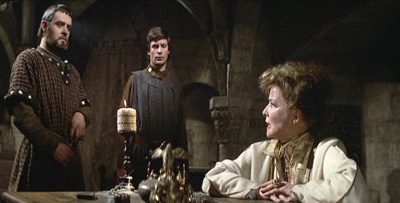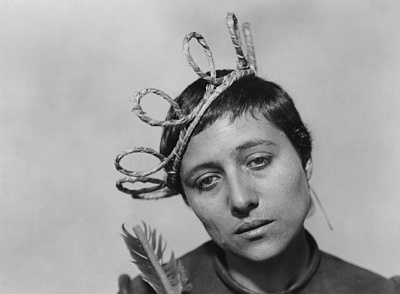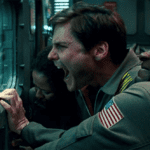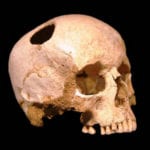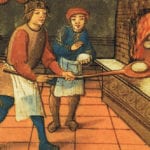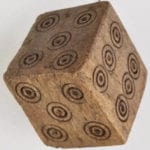King Henry V of England (Kenneth Branagh) is insulted by the King of France. As a result, he leads his army into battle against France. Along the way, the young king must struggle with the sinking morale of his troops and his own inner doubts. The war culminates at the bloody Battle of Agincourt. This film is based on the Shakespeare play of the same name and it contains brilliant battle scenes.
1327: after a mysterious death in a Benedictine Abbey, the monks are convinced that the apocalypse is coming. With the Abbey to play host to a council on the Franciscan’s Order’s belief that the Church should rid itself of wealth, William of Baskerville, a respected Franciscan monk, is asked to assist in determining the cause of the untimely death. This film depicts the turmoil that the Franciscan religious order was going through at the time and – like all work by Umberto Eco – is extremely well researched.
This is a historical epic concerning the birth of the Islamic religion and the story of Mohammed, who, in accordance with the tenants of Islam, is never seen or heard (any physical depiction of Mohammed is considered a sin within Islam). In Mecca in the 7th century, Mohammed is visited by a vision of the Angel Gabriel, who urges him to lead the people of Mecca to cast aside the 300 idols of Kaaba and instead worship the one true God.
This is an epic film of the legendary Spanish hero, Rodrigo Diaz (“El Cid” to his followers), who, without compromising his strict sense of honor, still succeeds in taking the initiative and driving the Moors from Spain. While aspects of this film may be slightly off (such as calling for Victory for Spain, which – as a political entity – was of little relevance at the time), it is nearly unique in its accurate portrayal of the time of the Crusades.
Andreiv Rublev charts the life of the great icon painter through a turbulent period of 15th Century Russian history, a period marked by endless fighting between rival Princes and by Tatar invasions. Tarkovsky is well known for his beautiful cinematography and that is definitely visible in this film.
The story takes place in 16th century England. But men like Sir Thomas More, who love life yet have the moral fiber to lay down their lives for their principles, are found in every century. Concentrating on the last seven years of English chancellor’s life, the struggle between More and his King, Henry VIII, hinges on Henry’s determination to break with Rome so he can divorce his current wife and wed again, and good Catholic More’s inability to go along with such heresy. While there is a slight bit of confusion over relationships in the movie, it is an extremely accurate portrayal of the time and situation the Saint Thomas More found himself in. You would be far better watching this than any of the “Elizabeth” movies of late which lack the accuracy and integrity of Zinnemann’s work.
In this movie, Martin Guerre returns to his hometown in the middle of France after being away at war since he was a child. Nobody recognizes him, and the people who knew him suspect he is not Martin, even though he knows intimate details about his family and friends. This film is based on true events and was remade more recently as Sommersby featuring Jodie Foster and Richard Gere.
In 1183 Henry II summonses his sons Richard, John, and Geoffrey to join him and his prison-bound wife Eleanor at Chinon for a family Christmas, along with King Philip II of France and his sister Alais, Henry’s mistress. Philip is insisting Alais now marries John as agreed years before else he wants her dowry, the lands of the Vexen, back. As Eleanor has already given the province of Aquitaine to Richard, the outcome of this may decide the very future of England. Starring Katharine Hepburn and Peter O’Toole, this is a film you must see.
You can’t get much more accurate than acting out the authentic court transcript of the trial of Saint Joan of Arc. This is a very old silent film, but it is ranked as number 1 for its attachment to the true story without the deviations or ulterior motives that many other portrays of St Joan have, and the fact that the lead actress (Maria Falconetti) gives what many consider to be the greatest acting performance ever recorded on film. If you haven’t seen this one, you should. Read More: Twitter Facebook YouTube Instagram
